It is an overcast day in San Francisco, California. A Facebook event has invited people to protest police brutality after the brutal murder of George Floyd by police just a few days earlier. As of that morning, 370 people had marked “Going,” and another 1200 had marked “Interested.”
At 12:00 p.m. at the United Nations Plaza, just two blocks from City Hall, the protesters gathered to hear opening statements. Raiah Sinn, the organizer, gives the first statements before handing the megaphone off to a few other speakers, with a listening crowd of about a hundred trickling in from every direction. Signs in all colors read “Black Lives Matter,” “Police and Criminal Justice Reform Now,” “The Time is Always Right to Do What is Right,” and “By Any Means Necessary.”
A man speaks after Sinn who, like the rest of us present, laments the state of the justice system in America. His comments elicit rousing agreement from the audience. Of George Floyd, he says, “Think about his family. Think about his mother; think about his children!”
With these words and rallying cries from the entire group – “No justice, no peace” – the walk to City Hall begins. Protesters spread out across McAllister Street, blocking both lanes of traffic. Because of the looming pandemic, few cars are on the road, but those that are blocked by the protest honk in solidarity with our course of action.
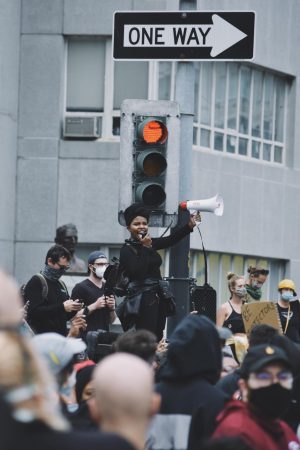
Sinn and the crowd halt at City Hall. Along a rail, two protesters hang a large banner that says “Revolution Nothing Less!” Police officers lurk in the doorway from inside the building, but otherwise stay out of the way of the crowd. Once people are standing – the lawn, the middle of the road, on the sidewalk, wherever there’s room – Sinn quiets the people before handing off the megaphone to “whoever has something to say.”
The air is charged. There is a feeling of confidence, of certainty there. We mean more together than apart. Protesters of all colors, genders, and ages step up to take their turn at shouting into the crowd. It’s difficult to hear. The gathering crowd has attracted the news, and the helicopters filming from above make it nearly impossible for people more than a few rows back to hear much. Nonetheless, people are determined to listen.
A black protester who explains that he is homeless begins his speech with “I love y’all.”
A young white man reads a spoken word, saying, “Those that look like me have bloodstained DNA. Those that look like me have been silent for centuries.”
A woman says, “We need to overthrow the whole f**king system. It will take work, it will be difficult, but it is worth it.”
A black man shouts, “The real thugs, the real criminals… are the ones that thwart the system!”
One black woman says, “I am more afraid of the pandemic that is the police… but this is not only about the police. This is about the millions of black people who are in danger every day.”
Another black woman recounts the story of how she lost her son. He happened to be mentally ill, and he was murdered by police. Instead of admitting their mistake, they changed their story so they would not face public outrage. “All I wanted was for them to be honest,” she says, voice breaking trying to hold back tears. “To admit that they made a mistake.”
After about an hour, at 1:15, a white man tries to antagonize a young black woman in the crowd, who is trying to listen to the speaker. She is wearing hospital scrubs. He isn’t wearing a mask. She tries to brush him off, but he continues to harass her for another minute or so. When she finally tells him off, speaking sharply, everyone within earshot takes notice. People from the surrounding crowd rush to her defense. Several people get physically between the two as things heat up. Someone empties a container full of cottage cheese on his head in retaliation. Raiah, watching from an outcrop, sees what’s going down below and takes control of the megaphone.
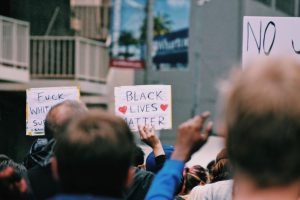
“Ignore him! Ignore him! Ignore him!” She begins the chant, and it gets picked up by the entire crowd. She then starts a second one: “Eyes to the front! Eyes to the front!” In less than sixty seconds, the troll is escorted to the back of the crowd by another protester and the speaker resumes as if she had been uninterrupted.
The next man to speak had been sitting on the outcrop with Sinn. He asks not to be filmed, so Sinn, into a second megaphone, demands, “Do not tape this individual! No one tape him!” Everyone complies immediately, stowing their phones into their pockets and lowering their cameras for the entirety of his speech. The audience applauds and the next speaker steps up.
At 1:30, the troll is back. He has returned quietly to his old spot in the crowd, and tries again to start a fight with the same people. This time, the response is immediate. Everyone steps in, crying out to ignore him and to force distance between him and the women he’s harassing. Someone calls, “White people to the front!” A surge of white protesters form a circle, facing outward, around the fuming individual. He can no longer see or speak to anyone else.
“We do not let a troll distract from what is supposed to be happening right now,” says the speaker who had been interrupted.
“Please leave if you’re not going to be peaceful here,” adds Sinn.
Five minutes later, a second troll is thrown out of the protests for trying to tear signs out of people’s hands. He is addressed by Sinn directly. “You, in the white shirt!” she shouts into the megaphone. As he is leaving, another man trails him, making sure he leaves for good. Someone asks why the police, who were watching, didn’t step in. Another chant picks up among the crowd:
“Do your job! Do your job! Do your job!”
Several more people came up to speak, emboldened by those that had gone before them.
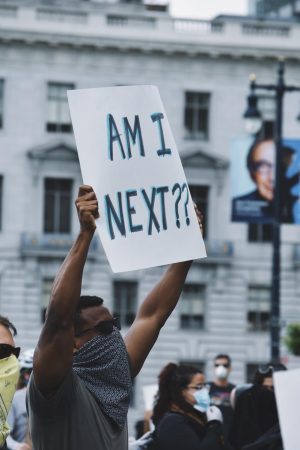
One woman, voice cracking from the effort to be heard, says, “When I saw that video, I was crushed!”
Another, “You can’t expect us to stand up here and do nothing. We want justice.” At this, there is applause from the crowd, and a few cries of “justice.” One of the police officers, listening through the window, nods his head in agreement.
Patience for speeches starts to wear thin at about 2:00 p.m., the crowd starting to get restless. Then, it begins to rain. Sinn took the megaphone and waited for quiet. She then announced the next part of the protest: a march on Market Street, one of the most heavily-trafficked areas in San Francisco. With every passing speaker over the past two hours the crowd had grown bigger, from under a hundred people to at least double, if not triple that amount. We were now a formidable force when we took to the streets. There were multiple chants taken up, sometimes more than one at once. The most popular ones were “Black Lives Matter!” “Say his name! George Floyd!” and “No justice, no peace, prosecute the police!”
Tourists stopped to take pictures of us. Cars on the cross-streets honked in support, some even sticking their hands out of their windows to wave or throw up a peace sign. The occasion is serious, but everyone is in good spirits. The rain is dampening our hair and clothes, we’re yelling the name of someone who should still be alive, and smiling at each other, knowing we are unified in a cause for justice. We stand a little taller, hold the signs a little higher, and scream “Black lives matter!” a little louder, and louder still as the sun comes back out.
We spill out of Market Street onto Embarcadero Road, taking over the right side of the street and the bus tracks, singing and shouting in the streets as we walk. More and more cars honk at us then, and the farther we go, the more people begin spilling out of crossroads on foot to join us, cheering as they come. Someone with a can of black spray paint has been tagging passing advertisements and bus stops with “F**k 12” and “F**k cops,” but no one pays them any attention.
From Embarcadero we head toward the highway, trying to get on Interstate 80 East. The police formed a barricade before we arrived. Several police cars were parked horizontally in the road to prevent pedestrian crossing, and in front of the cars was a line of police officers holding their batons in case of escalation. We approached them with our hands up in the air, yelling “Don’t shoot!”
Raiah Sinn gives a short speech into the megaphone. Then she asks that we, like so many others, take a knee in protest. The entire crowd kneels in unison, the action so subconscious it’s like we were made to be doing it here, in this moment. The movement of hundreds of people taking a knee in solidarity for a fallen brother is like a breaking wave. It is sweeping, strong, powerful. It crashes over each and every individual, and when it comes, there is nothing else. It is one of the most moving things I have ever seen. Few experiences compare. After several moments of silence, someone shouts “Take a knee!” in the direction of the barricade. They were asking for the police to prove that they were on our side, to show that they recognized the plight of the people; that they knew, and understood.
The police didn’t move.
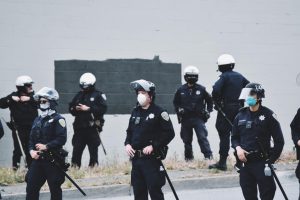
The rest of the crowd picked up the chant, but the officers remained where they stood. They weren’t looking at the crowd so much as looking through it, some hard-focused state that seemed to not really acknowledge that any of us were there. The officers weren’t really listening. They didn’t look at us with compassion or empathy, because they didn’t look at us at all. Someone took up a megaphone to talk about the significance of what the police had done. They had refused to stand with us. They had chosen solidarity with their own than with the people they were supposed to protect and serve. They had shown which side they were really on.
After the chanting died down, another protester took the megaphone. “I’d just like to read something,” he said, voice barely discernible above the wind and whirring helicopter blades. The rest of it, though, came out in a scream.
We understood what he was saying before it began: he was reading George Floyd’s last words to the crowd. Then, he turned to the police and did the same, shouting that he couldn’t breathe, and crying out for his mother. They looked through him too. What he said after reading the words was drowned out by other noise, but it was enough. The air was practically crackling with energy. Every breath we took was baited, a collective waiting. Then, from the left, farther down the street, victory cheers arose. Everyone stood up to cheer with them though we weren’t all sure what for. Once standing, we could see. The cheering voices were more protesters coming to join the group. With additional forces, we marched to the next highway entrance. Police barricaded that as well, but we were undeterred.
We approach the second barriers around 4:00 p.m. in the same way we did the first: hands up, yelling “Don’t shoot!” and, upon reaching the barricade, taking a knee, yelling Floyd’s name. A young man has the microphone now, and he leads the chants. “What do we want?” he shouts, and his voice carries easily. “Justice!” we say.
“When do we want it?”
“Now!”
He continues with other chants. We continue to shout that Black Lives Matter and recognize the man who was killed by yelling his name. The person with the megaphone speaks briefly about police brutality, and more people are coming to join the protest every few minutes from behind us. Not long after, he hands the microphone off to an older man.
Having seen riots before, he gives a short speech full of good advice. “Everybody out here, be committed to no violence,” he cautions. “Nonviolence and peace is the way. We’re not here to hurt the police.” People cheer and applaud.
Lastly, he says, “I hope you go vote!”
At 4:15 p.m., we gather our things and get up from where we were kneeling, and head to the next highway entrance. That one is blocked, and so is the next. We finally hit a police barricade in the middle of the street, and stop. We stand there, unmoving, for a while. A car tries to get through, and at first, it seems like people are going to refuse him passage. The driver revs his engine and begins to roll forward, and everyone scrambles out of the way. No one fails to give the car a good slap or kick as it passes, though.
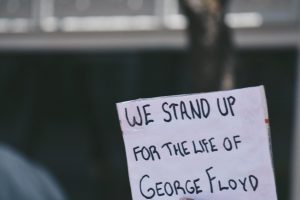
At around 4:45, I leave the protest early. Although I wish I could have stayed, there is only so much to be done that is productive. About an hour after I left, the protesters moved to the Mission Police Department, where the police had set up guard rails and stood, hands on their batons. Following that, looting and rioting began. According to CBS San Francisco, arrests were made following people tagging buildings, breaking windows, looting stores, and setting fires. The mayor instituted a curfew from 8:00 p.m. to 5:00 a.m. in order to try to prevent as much property damage as possible, and the police were seen escorting people away in handcuffs.
There are other protests scheduled for next week, including one in Menlo Park on Monday, one in Redwood City on Tuesday, and another in San Francisco on Wednesday. I encourage everyone to go and protest in George Floyd’s name if you can. If not, take three minutes and say his name quietly to yourself. Say the names of others, too, like Breonna Taylor, Regis Korchinski, Sandra Bland, Oscar Grant, Emmett Till. Carry them with you past this one minute. Past the next hashtag or Instagram post, or even the next protest. Never let anybody forget what police brutality has caused us to lose. Make people remember. Make them listen.



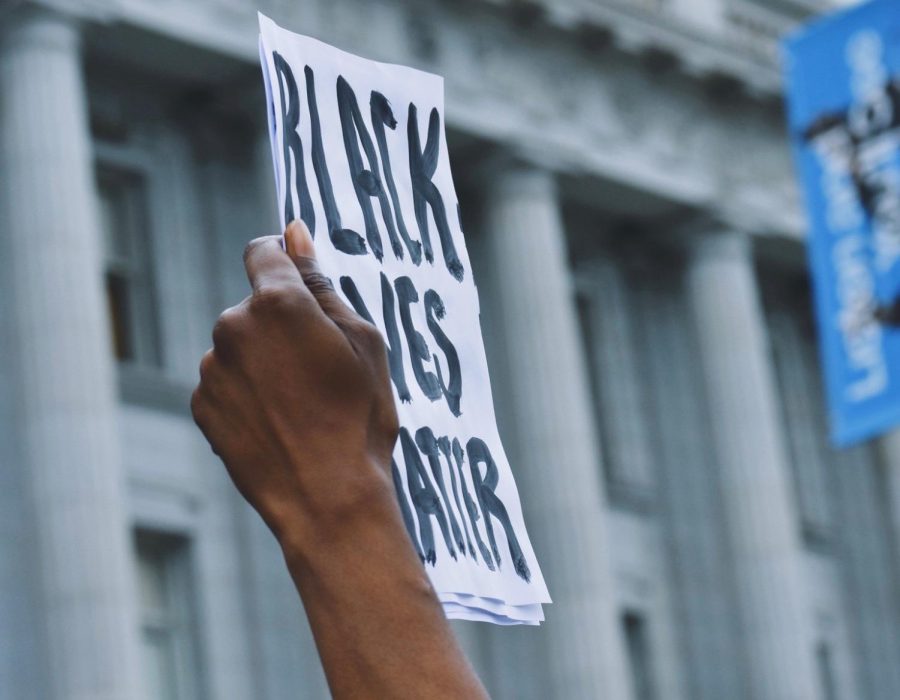


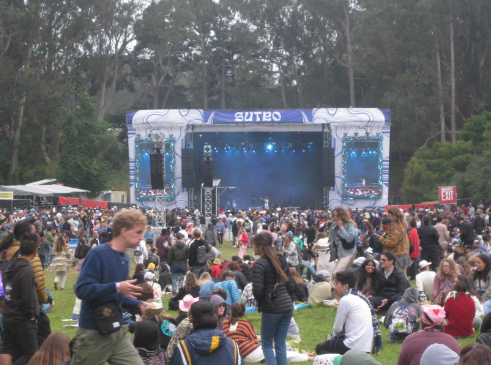

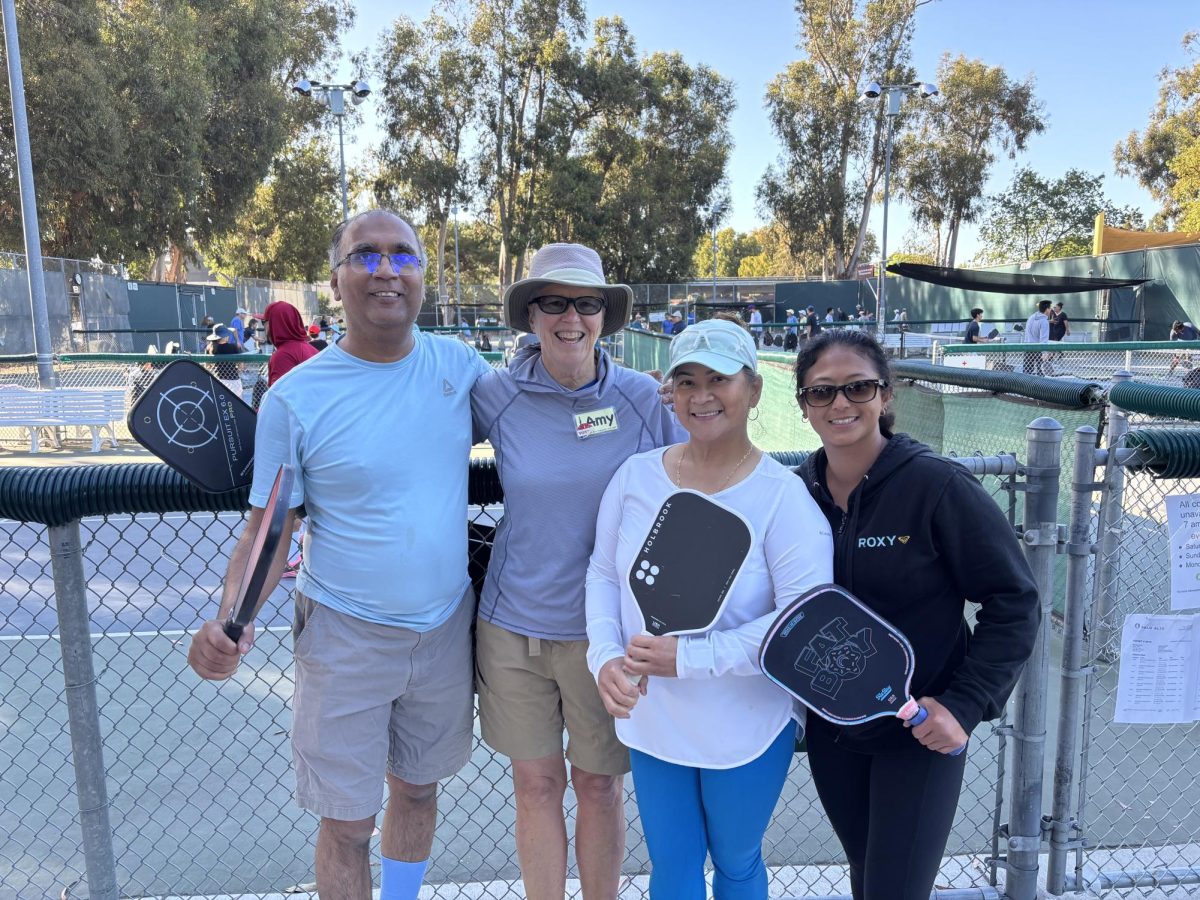
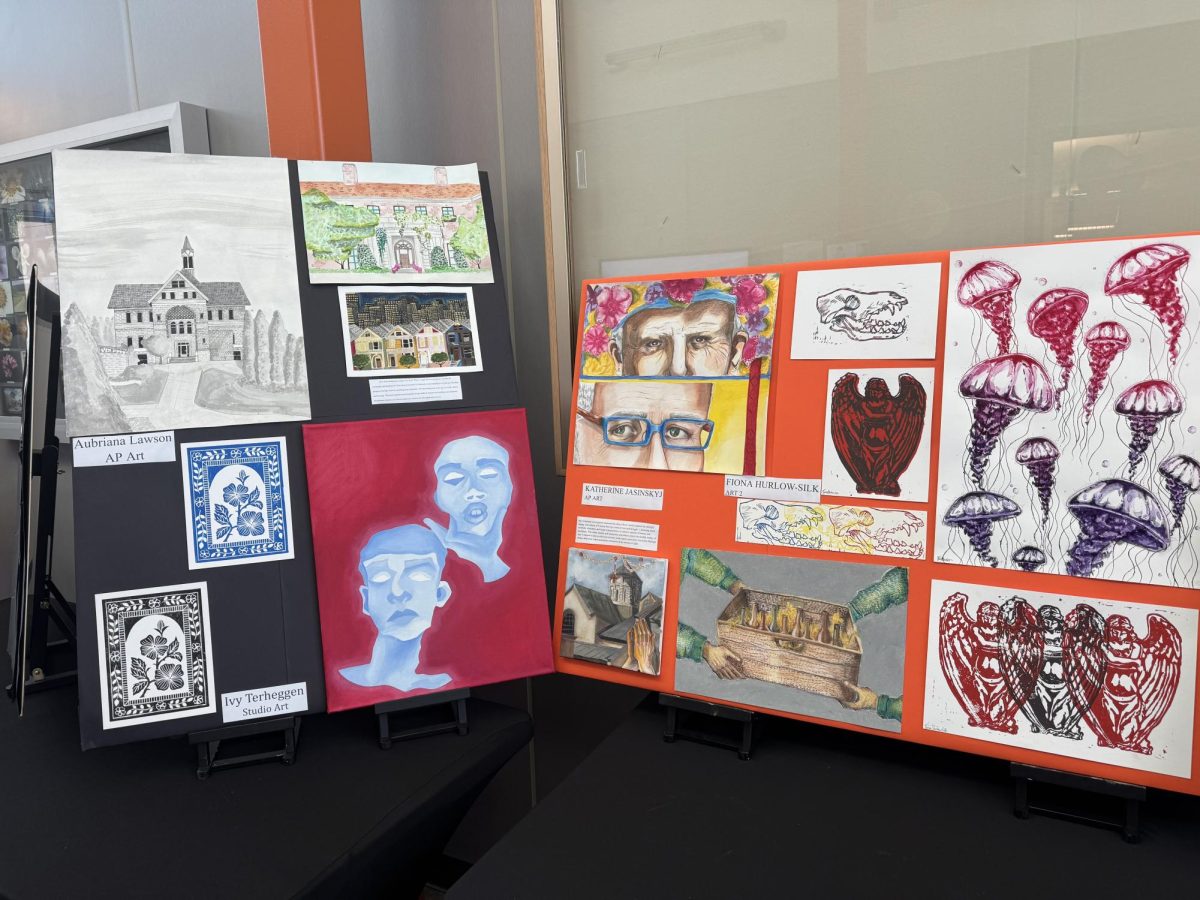
Catherine Schwenkler • May 31, 2020 at 6:23 PM
Thank you for sharing this experience. I felt like I was there with you, doing this very important thing. I have my tears in my eyes as I finish reading. You give hope for the next generation and all the good work you will do.
Marilyn Lynch • May 31, 2020 at 5:30 PM
Having been raised in the 60s, with high ideals, it’s so sad to see how little things have changed. I am encouraged by you Zoe and by other young adults taking a stand for the right thing. For everyone being equal. It’s times like this that I’m embarrassed to be white. I have everything white privilege can give and it’s my responsibility to speak up, care, love, and fight. Zoe, thanks for being on the front line.
Dean Vistnes • May 31, 2020 at 2:41 PM
Way to go Zoe! Proud of you!
Ruth E Renedo • May 31, 2020 at 2:11 PM
I ended reading this article with tears in my eyes. Zoe Mason, good reporting! You touched my heart and soul and I know that is true for many, many ohers! Thank you!